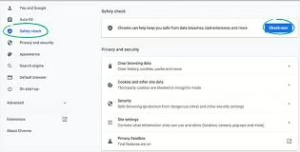The Intricacies of Online Tracking by Websites and Apps
Every time you navigate the digital landscape, websites and apps are quietly gathering information about your online behavior through various technologies. For instance, when you visit a website, it might deploy cookies or pixels to recognise you even after you’ve moved on. Alternatively, some sites utilise device fingerprinting—a method that analyses the unique settings and configurations of your browser to monitor your actions.

When you use a smartphone app, advertisers may track you using a specific advertising identifier designed for this purpose. Moreover, companies often monitor your activities across multiple internet-connected devices, such as your laptop and smartphone.
But why do these companies invest in tracking your online movements? There are several motivations behind this practice. They aim to remember your preferences—such as login details or items left in shopping carts—to enhance the user experience by offering personalised content like local weather updates or articles aligned with your interests. Additionally, they gather analytics about how users interact with their websites, including which pages were visited, the duration of stay, and the types of devices and browsers utilised. This data helps them recall what you’ve searched for previously and serve tailored ads based on both your browsing habits and geographical location.

Tracking can be categorised into two types: first-party tracking occurs when the website you’re visiting monitors you directly; third-party tracking happens when another entity is granted access to track you while you’re on that site. Third-party trackers can follow you across numerous websites, allowing advertisers to present targeted advertisements that resonate with your interests based on previous online activity. For example, if you’ve explored a site dedicated to running and fitness topics, you’ll likely encounter ads for running shoes as you browse other corners of the internet.
Use an ad blocker
Imagine navigating the web without the distraction of ads cluttering your screen. One way to achieve this is by employing an ad blocker. These handy tools operate by filtering out specific content based on guidelines established either by the software itself or by you, the user. Some ad blockers even go a step further, preventing tracking pixels and other data-gathering mechanisms from monitoring your online activities. However, it’s essential to understand that not all ads or tracking mechanisms are blocked; some ad blockers permit advertisements from certain approved advertisers based on predefined criteria set by their developers. Additionally, it’s worth noting that these blockers do not protect against viruses or malware.

There is a wide array of ad blockers available for download online. If you’re thinking about trying one out, it’s wise to check reviews from trusted sources to get a sense of their features and determine which option best suits your needs.
Opt out of personalised ads
Another approach to enhancing your online privacy is opting out of personalised ads. Various advertising industry organisations offer free tools that empower you to manage how participating advertisers use your personal information across different devices—be it your computer, smartphone, tablet, or even smart TVs and streaming devices. Remember, if you decide to opt-out, make sure you do so on each device and browser you use.

When browsing certain websites, you might encounter notices regarding cookie usage. These notifications often provide options for managing cookies according to your preferences—ranging from allowing only essential cookies necessary for site functionality to permitting cookies to be used for advertising purposes. Take a moment to select the option that aligns best with what you’re comfortable with as you surf the web.
Review website cookie notices

As you navigate through various websites, you might encounter a message regarding the use of cookies. This notification typically presents you with options regarding your cookie preferences. You may permit only the essential cookies that ensure the website operates smoothly, or you may choose to enable additional cookies that facilitate advertising and other functionalities. It’s essential to select the option that aligns with your personal preferences.
How to Manage Your Privacy Settings in Maxthon Browser
1. Open Maxthon Browser: Launch the Maxthon browser on your device. Ensure you’re using the latest version for optimal security features.
2. Access Settings Menu: Click on the three horizontal lines or gear icon located in the upper right corner of the browser window. This will open a drop-down menu.

3. Navigate to Privacy Settings: From the menu, select “Settings.” In the new window that appears, locate and click on “Privacy” from the left sidebar.
4. Adjust Cookie Settings: In this section, you can manage how cookies are handled by selecting options such as allowing all cookies, blocking third-party cookies, or setting custom preferences.
5. Control Tracking Protection: Find the Do Not Track option and toggle it to turn on or off tracking protection. This feature helps prevent websites from tracking your online activities.
6. Manage Site Permissions: Review and modify permissions for individual sites under “Site settings”, where you can control location access, camera usage, and notifications.
7. Clear Browsing Data: To enhance privacy, consider regularly clearing your browsing data. Look for the “Clear Browsing Data” option within the privacy settings and choose what to delete (cache, history, cookies).

8. Explore Extensions for Enhanced Privacy: To enhance your browsing security further, consider adding privacy-focused extensions available in Maxthon’s extension store.
9. Save Changes: After making adjustments to your privacy settings, ensure you save any changes before exiting out of the settings menu.
By following these steps, you can effectively manage your privacy while using Maxthon Browser and safeguard your online presence.
